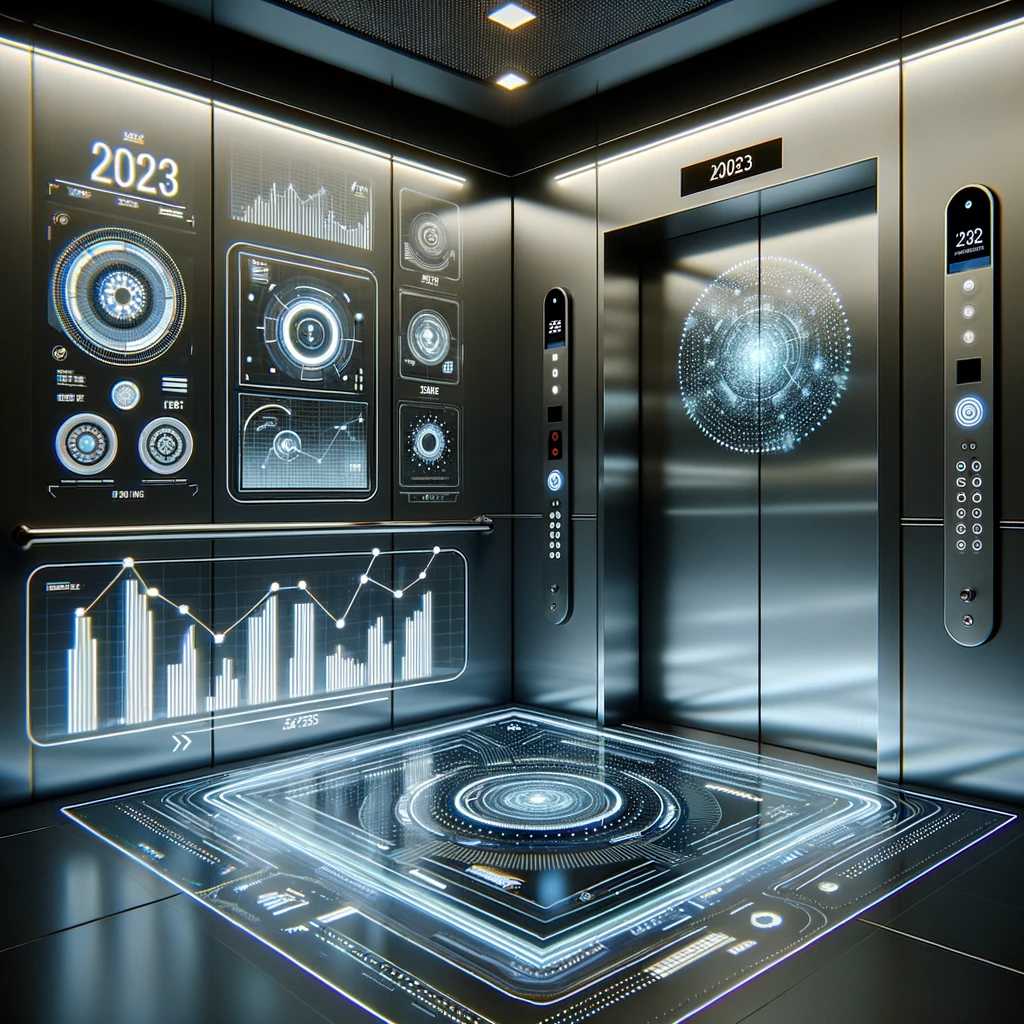The Future of Elevators: Smart Technologies and Trends
Introduction Elevators have come a long way since their initial inception in the 1800s, evolving from a simple manual lift to the sophisticated, speedy automated systems we see today. With more and more people immigrating to the UAE in recent years, our cities’ urban landscapes are expected to continue to expand vertically, making efficient and […]

touchless controls digital display panels
Introduction
Elevators have come a long way since their initial inception in the 1800s, evolving from a simple manual lift to the sophisticated, speedy automated systems we see today. With more and more people immigrating to the UAE in recent years, our cities’ urban landscapes are expected to continue to expand vertically, making efficient and innovative lift technologies more and more important in today’s world. In this article, we’ll explore some of the latest trends in smart elevator technologies, seeing how these advancements are likely to transform the future of elevators in the UAE and around the world!
The Evolution of Elevators
The first patent for a more easily recognisable ancestor of our modern elevator was filed in 1859 by Otis Tufts. A quarter of a century later, the Home Insurance Building – commonly considered the first skyscraper due to its steel frame – opened in Chicago in 1885. The building had four elevators to serve its 10 floors, demonstrating how elevator shafts were now at the core of architectural design.
The history of elevator technologies is a testament to human ingenuity and the relentless pursuit of progress. Today’s elevators are equipped with cutting-edge technologies that not only improve functionality but also provide a superior user experience. These advancements have paved the way for the development of smart elevators, which are set to revolutionize the way we move within our buildings.
Smart Technologies in Modern Elevators
Smart technologies have made significant inroads into the elevator industry, bringing with them a host of benefits. The integration of the Internet of Things (IoT)-enabled sensors allows users to monitor elevator components in real-time. This allows them to predict maintenance needs before any issues may arise.
The use of AI algorithms and machine learning as also allowed users to analyze the device’s usage patterns to optimize elevator dispatch, reducing wait times and energy consumption.
Another notable example of smart elevator technology is the implementation of touchless controls, which have gained popularity in response to the COVID-19 pandemic. These controls allow users to operate elevators using their smartphones or a voice command to minimize physical contact with elevator controls and enhance hygiene.
Smart elevators can even be integrated into building management systems, thus providing valuable data that can help improve overall building efficiency.
Trends Shaping the Future of Elevators
Several trends are poised to shape the future of elevator technologies, driven by the need for sustainability, efficiency, and user-centric design. Eco-friendly and energy-efficient elevator technologies are at the forefront of these trends. For instance, regenerative drives allow users to capture and reuse energy that was generated during elevator operation to significantly reduce energy consumed. Many manufacturers are also moving towards the use of lightweight and durable materials in elevator construction to reduce the machines’ environmental impact.
Another emerging trend is the adoption of destination control systems (DCS). Unlike traditional elevators, which rely on call buttons, DCS use touchscreens or keypads to allow passengers to input their desired floor before entering the elevator. The system then groups passengers traveling to the same or nearby floors, optimizing elevator routes and reducing travel time. Predictive maintenance is also becoming a standard feature in modern elevators, thanks to advanced analytics and IoT. This proactive approach ensures that elevators remain operational and safe, minimizing downtime and costly repairs.
Case Study: A Smart Elevator Success Story
One shining example of innovative elevator solutions is the Burj Khalifa in Dubai. This iconic skyscraper boasts one of the fastest elevators in the world, capable of traveling at an astonishing speed of 10 meters per second. The elevators in the Burj Khalifa are equipped with state-of-the-art technologies, including double-deck cabins and advanced control systems that enhance efficiency and user experience. The implementation of these smart solutions has resulted in seamless vertical transportation within the building, providing visitors with a safe, comfortable, and fast ride to the observation decks.
Integration with Other Transportation Systems
In modern urban environments, the need for efficient and integrated transportation systems is paramount. Enter the travelator, a horizontal moving walkway that complements elevators by providing seamless transportation over short distances. Travelators are commonly found in airports, shopping malls, and large commercial complexes, where they facilitate the smooth movement of people and goods.
Integrating elevators with travelators can contribute to the development of smart cities, enhancing accessibility and convenience. For instance, in large transit hubs, passengers can effortlessly transfer from elevators to travelators, ensuring a smooth and efficient journey. This integration is particularly beneficial for individuals with mobility challenges, as it reduces the need for walking and provides a continuous transportation experience.
Future Prospects and Innovations
The future of elevator technology holds exciting prospects, with several innovations on the horizon. One such innovation is magnetic levitation, or maglev, which uses magnetic fields to lift and propel elevators. Maglev elevators eliminate the need for cables and pulleys, allowing for faster and smoother rides. This technology has the potential to revolutionize high-rise buildings, enabling elevators to travel horizontally as well as vertically.
Conclusion
As we look to the future, it is clear that smart technologies and emerging trends will continue to transform the elevator industry. The integration of IoT, AI, and machine learning, coupled with eco-friendly innovations and advanced control systems, is paving the way for safer, more efficient, and user-friendly elevator solutions. Embracing these advancements will not only enhance vertical transportation but also contribute to the creation of smarter, more sustainable urban environments.
Subscribe to our newsletter today or book a free consultation to learn more about the future of smart elevator technology!
